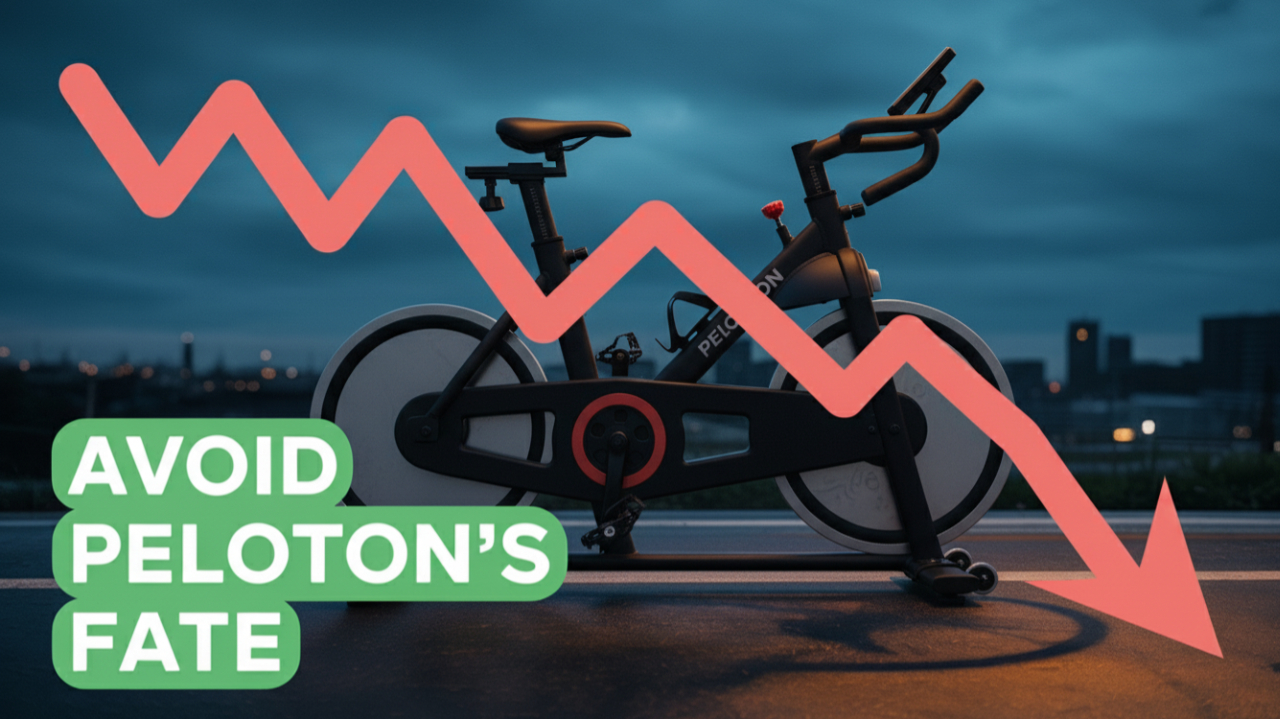
What Peloton’s Comeback Teaches Small Business Owners About Customer Retention
“The best business plan in the world loses to the one that listens.”
What Peloton’s Comeback Teaches Small Business Owners About Customer Retention
The Rise, Fall, and Rebuild of Peloton
Peloton was once a $50-billion powerhouse. Their bikes were on backorder, their brand was everywhere, and they owned the at-home fitness market.
But when the world reopened, the excitement faded. Customers got bored, engagement dropped, and Peloton’s growth flatlined.
Now, ahead of the holidays, Peloton is raising prices and redesigning its equipment to reignite sales.
Their story isn’t about fitness — it’s about customer retention. They built a product people bought once, not a business people came back to.

Lesson 1: A Sale Isn’t a Success Unless It Creates a Second One
Many entrepreneurs think growth means chasing new customers. But the truth is: the best businesses make money from repeat customers.
Peloton nailed the first sale — the bike — but couldn’t keep users engaged.
As a small business owner, ask yourself: What brings people back?
Create a “return path” with things like:
Maintenance plans
Membership programs
Seasonal promotions
Loyalty discounts
A one-time sale makes you money. A repeat customer builds your business.
Lesson 2: Long Sales Cycle ≠ Lost Relationship
Even if your service has a long cycle — like a remodeler, landscaper, or marketing agency — you can still nurture relationships year-round.
Peloton’s mistake was silence. They stopped engaging when interest dropped.
Stay top of mind by:
Sending monthly tips or updates
Sharing success stories
Checking in personally
Offering value between purchases
Don’t go quiet after the sale. Stay connected and you’ll stay remembered.
Lesson 3: The Best Business Plan Is the One That Listens
Peloton ignored their audience’s feedback. Users wanted more variety and personalization — instead, they got the same experience.
Small business owners have a huge edge here: agility. You can make changes tomorrow.
Ask your customers directly:
“What did you love most?”
“What could we improve?”
“What would make you come back sooner?”
Listening costs nothing, but ignoring feedback can cost you everything.
Lesson 4: Don’t Just Sell a Product — Build a Community
Peloton’s original magic wasn’t just workouts — it was connection. People high-fived mid-ride, shared progress, and felt like part of a movement.
When that sense of community faded, loyalty went with it.
You can build your own version locally:
Create a private Facebook group
Highlight customer success stories
Host client appreciation events
Celebrate milestones publicly
People don’t leave communities. They leave companies that forget them.
Lesson 5: Continuous Improvement Beats Reinvention
Peloton is now spending millions to reinvent itself — new products, new prices, new positioning.
But small business owners don’t need reinvention. You just need consistent improvement.
Every quarter, ask:
“Where are customers losing interest?”
“How can I make our experience smoother?”
“What would make them say wow again?”
Continuous improvement keeps you from ever needing a complete restart.
The Takeaway: Build a Business People Come Back To
Peloton’s story is a reminder that growth slows when excitement fades — and customers leave when you stop evolving.
To stay ahead:
✅ Give customers a reason to return.
✅ Keep the relationship alive between sales.
✅ Listen and adapt quickly.
✅ Build a real community.
✅ Improve before you have to reinvent.
That’s how you turn a small business into a sustainable one.
Peloton’s story isn’t about bikes — it’s about business cycles. And your business has the power to create its own comeback.
